-
 Bitcoin
Bitcoin $106,077.7663
-2.62% -
 Ethereum
Ethereum $2,644.4634
-6.15% -
 Tether USDt
Tether USDt $1.0002
0.01% -
 XRP
XRP $2.1872
-4.65% -
 BNB
BNB $653.9698
-2.13% -
 Solana
Solana $153.1055
-6.13% -
 USDC
USDC $0.9995
-0.02% -
 Dogecoin
Dogecoin $0.1816
-7.39% -
 TRON
TRON $0.2711
-2.62% -
 Cardano
Cardano $0.6627
-6.02% -
 Hyperliquid
Hyperliquid $41.2391
-2.26% -
 Sui
Sui $3.2151
-6.48% -
 Chainlink
Chainlink $13.9480
-8.21% -
 Avalanche
Avalanche $20.3371
-6.68% -
 Bitcoin Cash
Bitcoin Cash $426.8582
0.05% -
 Stellar
Stellar $0.2690
-3.73% -
 UNUS SED LEO
UNUS SED LEO $8.8698
-1.89% -
 Toncoin
Toncoin $3.0810
-5.36% -
 Shiba Inu
Shiba Inu $0.0...01223
-7.14% -
 Hedera
Hedera $0.1640
-6.34% -
 Litecoin
Litecoin $86.5702
-6.14% -
 Polkadot
Polkadot $3.9430
-6.93% -
 Ethena USDe
Ethena USDe $1.0004
-0.03% -
 Monero
Monero $316.4579
-4.76% -
 Bitget Token
Bitget Token $4.6091
-4.34% -
 Dai
Dai $1.0001
0.02% -
 Pepe
Pepe $0.0...01157
-8.95% -
 Uniswap
Uniswap $7.6778
-4.82% -
 Pi
Pi $0.6144
-3.05% -
 Aave
Aave $290.2271
-5.59%
The black line reverses the positive line: a confirmation signal of trend reversal?
A black line crossing below the positive line in MACD signals bearish momentum, often indicating a potential trend reversal when confirmed with volume and price action.
Jun 12, 2025 at 12:22 am
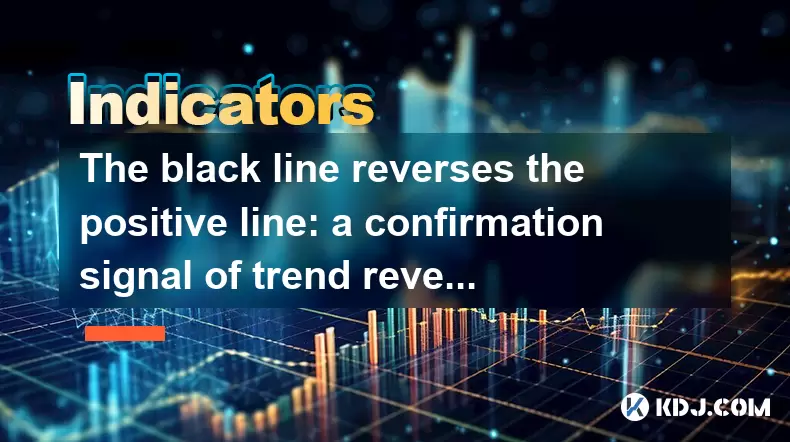
Understanding the Black Line and Positive Line in Technical Analysis
In the realm of cryptocurrency trading, technical indicators play a crucial role in interpreting price movements. Among these, the MACD (Moving Average Convergence Divergence) is one of the most widely used tools by traders to identify potential trend reversals. Within the MACD indicator, two key components are the black line and the positive line.
The black line, also known as the MACD line, is derived from the difference between two exponential moving averages — typically the 12-period EMA and the 26-period EMA. The positive line, or signal line, is a 9-period EMA of the MACD line itself. These lines oscillate above and below a zero centerline, providing visual cues for bullish and bearish momentum shifts.
What Does It Mean When the Black Line Crosses Below the Signal Line?
A reversal of the black line crossing below the positive line occurs when the MACD line drops below its signal line. This event is often interpreted as a bearish signal, suggesting that downward momentum may be gaining strength. Traders frequently view this crossover as an indication that the current uptrend might be losing steam, potentially leading to a reversal.
This scenario becomes more significant when it happens after a prolonged bullish movement. If the black line crosses below the positive line near overbought levels on other indicators like RSI or stochastic oscillators, it reinforces the likelihood of a trend reversal. However, it’s essential to remember that no single indicator should be relied upon exclusively.
How to Confirm a Trend Reversal Using the Black Line Crossover
To increase the accuracy of using the black line reversal as a confirmation signal, traders should combine it with other forms of analysis:
- Price Action Validation: Look for bearish candlestick patterns such as engulfing candles or shooting stars at resistance levels.
- Volume Confirmation: A spike in selling volume during the crossover can indicate strong institutional or retail sell pressure.
- Support and Resistance Levels: If the crossover occurs near a key resistance level, the probability of a reversal increases significantly.
- Multiple Timeframe Analysis: Checking the same signal across different timeframes (e.g., daily and 4-hour charts) can help filter out false signals.
Each of these elements adds layers of confirmation, helping traders avoid premature entries based solely on MACD crossovers.
Common Misinterpretations and How to Avoid Them
One of the most common mistakes made by novice traders is taking every MACD crossover as a valid trend reversal signal. In reality, the black line crossing below the positive line can occur frequently during consolidation phases or within a sideways market, where no real trend exists.
Another misstep involves ignoring divergence. For example, if the price makes higher highs but the MACD makes lower highs, this hidden divergence suggests weakening momentum even before any crossover takes place.
Traders should also be cautious about using MACD in isolation on highly volatile cryptocurrencies. Assets like altcoins can generate multiple false signals due to erratic price swings. Therefore, combining MACD with volatility filters like Bollinger Bands or standard deviation can enhance reliability.
Practical Steps to Trade Based on Black Line Reversal Signals
If you're planning to trade based on a black line reversal, follow these steps carefully:
- Identify the crossover: Wait for the MACD line (black line) to cross below the signal line (positive line).
- Check the context: Ensure the crossover occurs after a clear uptrend or near a major resistance level.
- Look for supporting signals: Confirm with candlestick patterns, volume spikes, or divergences.
- Set entry point: Enter a short position once the candle closes below the crossover point.
- Place stop loss: Set your stop loss slightly above the recent swing high to manage risk.
- Target profit zones: Use Fibonacci retracement levels or previous support/resistance areas to determine exit points.
By following this structured approach, traders can better manage their positions and reduce exposure to false breakouts or whipsaws.
Backtesting and Historical Performance
Before applying the black line reversal strategy in live markets, it's critical to backtest it against historical data. Many trading platforms allow users to apply MACD-based strategies to past price data to assess performance.
When conducting backtests, consider the following:
- Use multiple assets: Test the strategy on various cryptocurrencies like BTC, ETH, and smaller-cap coins.
- Adjust parameters: While the default MACD settings are 12, 26, and 9, some traders tweak them for faster or slower signals.
- Analyze win rate and risk-reward ratio: A strategy might have a low win rate but still be profitable if the average gain outweighs the average loss.
Through rigorous testing, traders can fine-tune their approach and understand how effective the black line reversal is under different market conditions.
Frequently Asked Questions
Q: Can the black line reversal be used in both bullish and bearish markets?
Yes, while the focus here has been on the black line crossing below the positive line (a bearish signal), the opposite — the black line crossing above the positive line — serves as a bullish signal. However, the effectiveness varies depending on whether the market is trending or ranging.
Q: Is the black line reversal reliable on all timeframes?
No, shorter timeframes like 5-minute or 15-minute charts tend to produce more false signals due to increased noise. Longer timeframes such as daily or weekly charts offer more reliable reversals when confirmed with additional tools.
Q: Should I always wait for the candle to close before acting on a black line crossover?
It’s generally recommended to wait for the candle to close to confirm the validity of the signal. Acting prematurely on an incomplete candle may result in entering a trade based on a false or temporary crossover.
Q: Are there alternative indicators that work well alongside the black line reversal?
Yes, combining the MACD with RSI, volume indicators, and support/resistance analysis improves the accuracy of the signal. Some traders also use moving averages or Ichimoku Cloud for added confluence.
Disclaimer:info@kdj.com
The information provided is not trading advice. kdj.com does not assume any responsibility for any investments made based on the information provided in this article. Cryptocurrencies are highly volatile and it is highly recommended that you invest with caution after thorough research!
If you believe that the content used on this website infringes your copyright, please contact us immediately (info@kdj.com) and we will delete it promptly.
- Ditching the Meme: Why Savvy Investors Are Putting Their Money into Ruvi AI Instead of Shiba Inu
- 2025-06-13 07:00:13
- Spark Protocol Prepares to Airdrop Its SPK Token, TVL Surges 114%
- 2025-06-13 07:00:13
- Increasing by 4x in two months, Hype recovered fully from the early-year collapse and printed a new all-time high yesterday.
- 2025-06-13 06:57:02
- Coinbase to Launch Cryptocurrency Perpetual Futures Trading for U.S. Users
- 2025-06-13 06:50:13
- The Best Cryptos to Join Now: Qubetics, Stellar, and Tezos Are Leading the Charge
- 2025-06-13 06:50:13
- Trust Wallet Token (TWT) Price Drops 5.7% as RWA Integration Plans Ignite Excitement
- 2025-06-13 06:45:13
Related knowledge
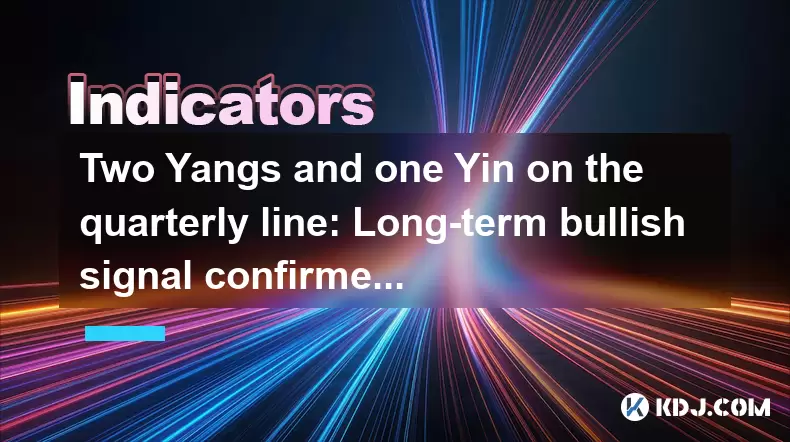
Two Yangs and one Yin on the quarterly line: Long-term bullish signal confirmed?
Jun 12,2025 at 07:00am
Understanding the 'Two Yangs and One Yin' Candlestick PatternIn technical analysis, candlestick patterns play a pivotal role in identifying potential market reversals or continuations. The 'Two Yangs and One Yin' pattern is one such formation that traders often observe on longer timeframes like the quarterly chart. This pattern consists of two bullish (...
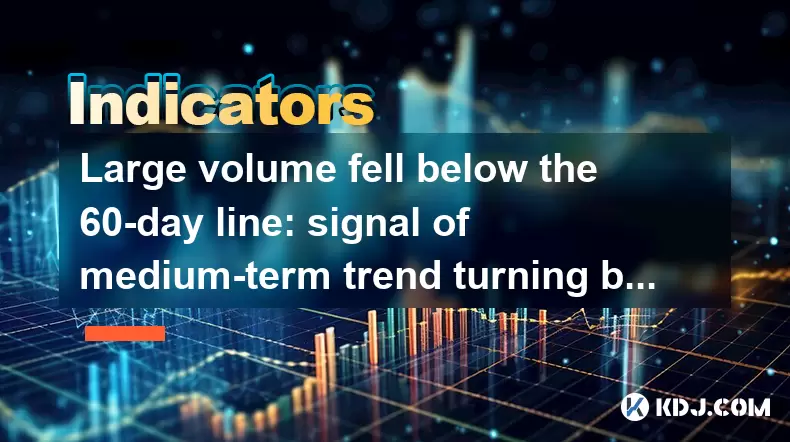
Large volume fell below the 60-day line: signal of medium-term trend turning bearish?
Jun 13,2025 at 03:42am
Understanding the 60-Day Moving Average in CryptocurrencyIn cryptocurrency trading, technical analysis plays a crucial role in predicting price movements. One of the most commonly used indicators is the 60-day moving average (MA), which smooths out price data over the last 60 days to provide traders with insights into the medium-term trend. When large v...
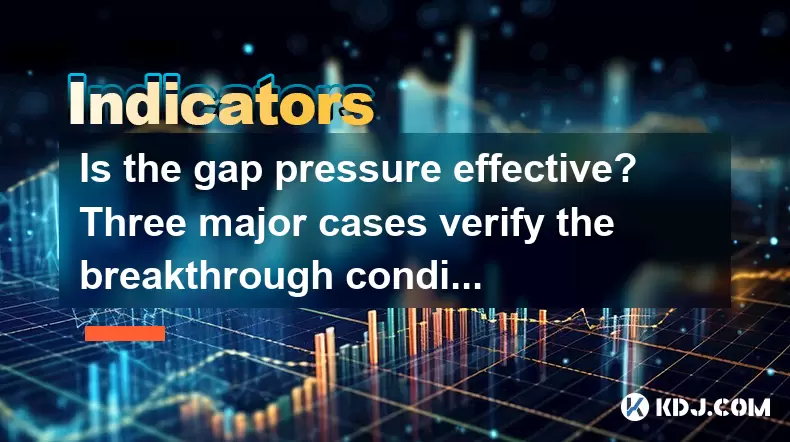
Is the gap pressure effective? Three major cases verify the breakthrough conditions
Jun 13,2025 at 04:35am
Understanding the Gap Pressure in Cryptocurrency TradingIn cryptocurrency trading, gap pressure refers to a technical analysis concept where price gaps form due to sudden market movements. These gaps often occur between the closing price of one trading session and the opening price of the next. Traders pay close attention to these gaps because they can ...
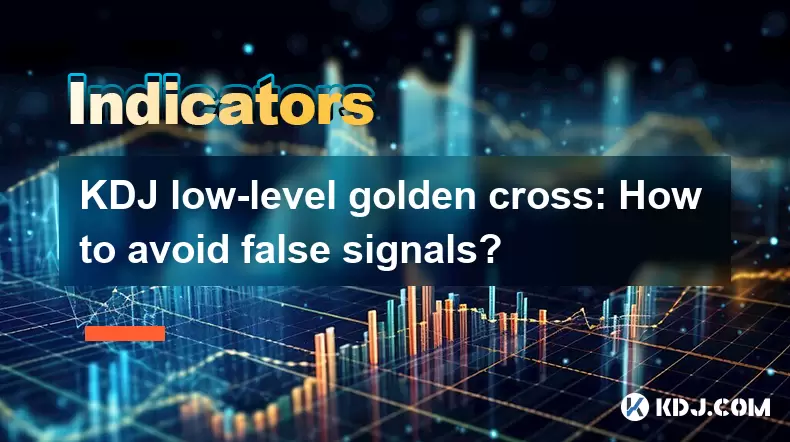
KDJ low-level golden cross: How to avoid false signals?
Jun 12,2025 at 08:21am
Understanding the KDJ IndicatorThe KDJ indicator, also known as the stochastic oscillator, is a momentum-based technical analysis tool widely used in cryptocurrency trading. It consists of three lines: the %K line (fast stochastic), the %D line (slow stochastic), and the %J line (divergence value). These lines oscillate between 0 and 100, helping trader...

Bottom-up volume stagnation: Is it accumulation or heavy selling pressure?
Jun 12,2025 at 01:42pm
What Is Bottom-Up Volume Stagnation?Bottom-up volume stagnation refers to a specific pattern observed in cryptocurrency trading charts where the price of an asset moves sideways or slightly downward, and trading volume remains consistently low over an extended period. This phenomenon is often seen after a sharp price drop or during a prolonged bear mark...
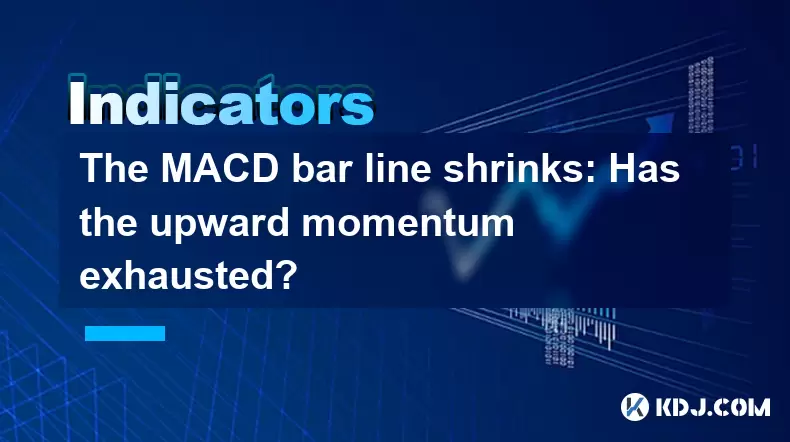
The MACD bar line shrinks: Has the upward momentum exhausted?
Jun 12,2025 at 12:49am
Understanding the MACD Bar LineThe Moving Average Convergence Divergence (MACD) is a widely used technical indicator in cryptocurrency trading. It consists of three main components: the MACD line, the signal line, and the MACD histogram (also known as the bar line). The MACD bar line represents the difference between the MACD line and the signal line. W...

Two Yangs and one Yin on the quarterly line: Long-term bullish signal confirmed?
Jun 12,2025 at 07:00am
Understanding the 'Two Yangs and One Yin' Candlestick PatternIn technical analysis, candlestick patterns play a pivotal role in identifying potential market reversals or continuations. The 'Two Yangs and One Yin' pattern is one such formation that traders often observe on longer timeframes like the quarterly chart. This pattern consists of two bullish (...

Large volume fell below the 60-day line: signal of medium-term trend turning bearish?
Jun 13,2025 at 03:42am
Understanding the 60-Day Moving Average in CryptocurrencyIn cryptocurrency trading, technical analysis plays a crucial role in predicting price movements. One of the most commonly used indicators is the 60-day moving average (MA), which smooths out price data over the last 60 days to provide traders with insights into the medium-term trend. When large v...

Is the gap pressure effective? Three major cases verify the breakthrough conditions
Jun 13,2025 at 04:35am
Understanding the Gap Pressure in Cryptocurrency TradingIn cryptocurrency trading, gap pressure refers to a technical analysis concept where price gaps form due to sudden market movements. These gaps often occur between the closing price of one trading session and the opening price of the next. Traders pay close attention to these gaps because they can ...

KDJ low-level golden cross: How to avoid false signals?
Jun 12,2025 at 08:21am
Understanding the KDJ IndicatorThe KDJ indicator, also known as the stochastic oscillator, is a momentum-based technical analysis tool widely used in cryptocurrency trading. It consists of three lines: the %K line (fast stochastic), the %D line (slow stochastic), and the %J line (divergence value). These lines oscillate between 0 and 100, helping trader...

Bottom-up volume stagnation: Is it accumulation or heavy selling pressure?
Jun 12,2025 at 01:42pm
What Is Bottom-Up Volume Stagnation?Bottom-up volume stagnation refers to a specific pattern observed in cryptocurrency trading charts where the price of an asset moves sideways or slightly downward, and trading volume remains consistently low over an extended period. This phenomenon is often seen after a sharp price drop or during a prolonged bear mark...

The MACD bar line shrinks: Has the upward momentum exhausted?
Jun 12,2025 at 12:49am
Understanding the MACD Bar LineThe Moving Average Convergence Divergence (MACD) is a widely used technical indicator in cryptocurrency trading. It consists of three main components: the MACD line, the signal line, and the MACD histogram (also known as the bar line). The MACD bar line represents the difference between the MACD line and the signal line. W...
See all articles

























































































